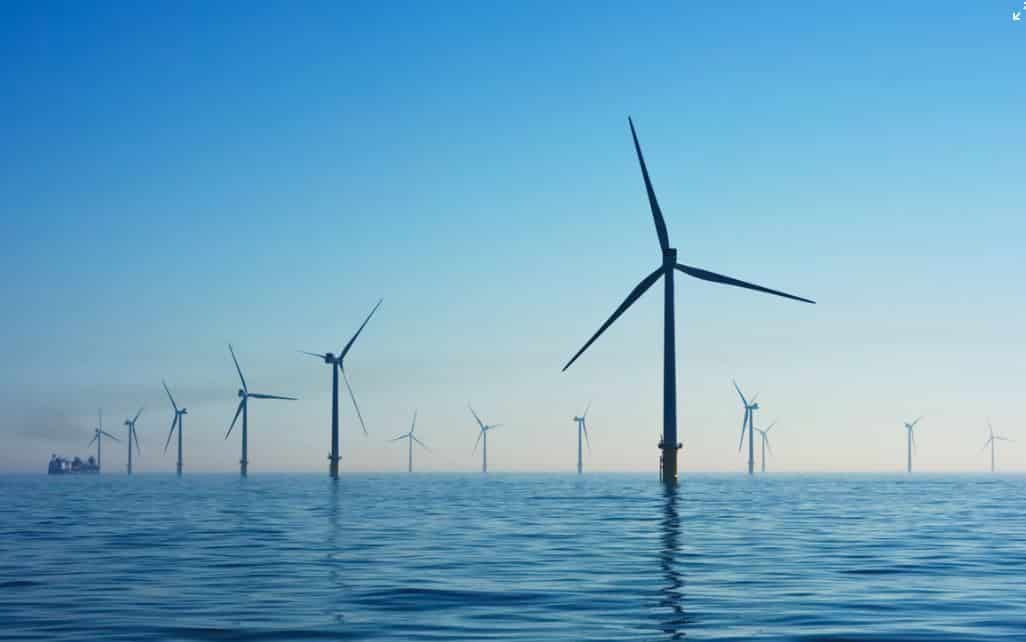Sky’s the Limit on Offshore Wind, but Greater Competition Will Define How Sector Grows

EDINBURGH, Scotland – As nations around the world combat the climate crisis, corporations are increasingly embracing offshore wind as a sustainable and profitable solution, a new analysis by Wood Mackenzie, the U.K.-based research firm, suggests.
“Offshore wind resources in the United States are big enough to produce more electricity than the nation currently consumes,” said Sara Muckstadt, senior product marketing manager in Wood Mackenzie’s Boston, Massachusetts, office, during an online presentation.
“Twenty-nine states have the potential to generate offshore wind energy, both from the Atlantic and the Pacific as well as from the Gulf of Mexico and Great Lakes regions,” Muckstadt said, adding, “These markets are quickly evolving, with many projects in the development pipeline, but still, a lot of opportunities remain untapped, waiting to be unleashed.”
Stephanie Scollard, a senior product analyst in Wood Mackenzie’s Houston, Texas, office spoke next, pointing to a map of the East Coast of the United States and drawing viewers’ attention to an area about 15 miles off Martha’s Vineyard, Massachusetts, in the Atlantic Ocean.
The site is the location of Vineyard Wind 1, a project consisting of an array of 62 wind turbines, which is on course to be the nation’s first operational utility-scale offshore wind project.
With each turbine capable of generating 13 MW of electricity, Vineyard Wind 1 is expected to generate 800 MW of electricity annually — enough to power 400,000 homes, Scollard said.
Of course, whenever opportunities for development are discussed, concerns about the impact on surrounding communities and ecosystems arise.
All who spoke during the presentation agreed addressing these concerns is crucial to the growth of the offshore wind sector.
“As the first commercial scale offshore wind farm in the U.S., we’ve tried to set a very high bar when it comes to marine mammal and environmental protections,” Klaus Skoust Moeller, CEO of Vineyard Wind 1, said.
“Our collaboration with the University of New Hampshire allows us to leverage their significant local expertise and build on existing scientific capacity in New England to support future work in this growing industry,” Moeller continued. “The data we collect in this program will allow us to make informed, science-based decisions that will allow responsible wind energy development with minimal impact on the marine environment.”
In a report released in May, Wood Mackenzie predicted the cumulative global investment in the offshore wind sector will reach $1 trillion by the end of the current decade.
By 2030, Wood Mackenzie expects 24 countries to have large-scale offshore wind farms, up from nine today.
With that growth, installed capacity will reach 330 GW, up from 34 GW in 2020.
But with success, will come greater competition, said Søren Lassen, head of the firm’s office of offshore wind research, in a written statement.
“Companies are now jostling to bag a share of the trillion-dollar offshore wind industry,” Lassen said. “The pipeline of proposed projects grew 66% last year and is now nearly three times as high as our projected offshore wind capacity in 2030. The challenge is that few opportunities in the offshore wind space will go uncontested.
“As more companies bid, lease payments skyrocket and subsidies drop, project returns are falling,” Lassen continued. “Cost competitiveness will always remain a central element of winning in offshore wind; however, a new set of factors beyond bidding price is gaining traction, and this will determine who wins and who loses in the industry. These four factors — local content, systems integration, ecological mitigation and sustainability — will necessitate a strategic shift for competitors in offshore wind.”
Eden can be reached at [email protected]























